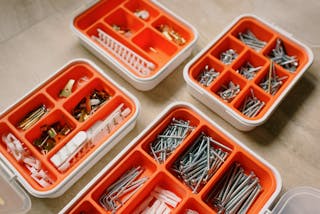
Having an AED at home could save a life in the event of a sudden cardiac arrest (SCA). SCA is a leading cause of death, and every minute that passes without CPR and defibrillation decreases the chances of survival by 10%. AEDs are user-friendly, and with proper training, anyone can use one.
Some people may be reluctant to have an AED at home because they are worried about liability issues. However, in most cases, Good Samaritan laws protect people who use AEDs, as long as they act in good faith and do not have any prior knowledge that the person they are trying to help has a medical condition that could be adversely affected by defibrillation.
Another concern may be the cost of an AED, but many organizations, including the American Red Cross, offer grants to help offset the cost. In addition, some states have AED prescription laws that require insurance companies to cover the cost of AEDs.
The bottom line is that having an AED at home could save a life. Would you want to be prepared if someone you love went into sudden cardiac arrest?
What is an AED?
An automatic external defibrillator (AED) is a portable device that checks the heart rhythm and can deliver an electrical shock to the heart to try to restore a normal rhythm. AEDs are used to treat sudden cardiac arrest (SCA).
SCA is a medical emergency that happens when the heart suddenly stops beating. When this happens, blood stops flowing to the brain and other vital organs. SCA usually happens because of an abnormal heart rhythm called ventricular fibrillation (VF). VF is when the electrical activity of the heart becomes very chaotic and the heart can’t pump blood.
If SCA is not treated right away, it will lead to death. AEDs are used to treat SCA because they can restore a normal heart rhythm.
The AHA estimates that nearly 350,000 out-of-hospital cardiac arrests occur in the United States each year. For every minute that passes without CPR and defibrillation, the chance of survival decreases by 10%.
AEDs are designed to be easy to use. Most AEDs have voice prompts that give step-by-step instructions. AEDs also have pictures or symbols that show you how to use the device.
AEDs can be found in many public places, such as airports, schools, offices, and gyms. Many police and fire departments, and other emergency responders, also carry AEDs.
If you are with someone who has sudden cardiac arrest, the first thing you should do is call 911. Then, if an AED is available, bring it to the person and follow the instructions.
CPR can help to circulate blood and oxygen to the brain and other vital organs. However, CPR alone is usually not enough to restore a normal heart rhythm. That’s why it’s important to use an AED as soon as possible.
When using an AED, it’s important to follow the instructions carefully. You will need to place the pads on the person’s bare chest. The AED will then analyze the heart rhythm and deliver a shock if needed.
After the shock is delivered, the AED will prompt you to resume CPR. It’s important to continue CPR until the paramedics arrive and take over.
Sudden cardiac arrest is a medical emergency that can happen
What does an AED do?
An AED is a device that is used to deliver a potentially life-saving electrical shock to the heart of someone who is in cardiac arrest. AEDs are designed to be used by people who have no medical training, and they can be found in a variety of public places, such as airports, schools, and office buildings.
When someone goes into cardiac arrest, their heart stops beating and they stop breathing. This is a potentially fatal condition, and it requires immediate medical attention. If an AED is available, it can be used to deliver a shock to the heart, which may restart it.
AEDs are easy to use, and they have clear instructions that anyone can follow. Once an AED is turned on, it will assess the person's heart rhythm and, if a shock is indicated, it will deliver the shock automatically. AEDs will also provide clear instructions on how to perform CPR, if necessary.
While AEDs are life-saving devices, it is important to remember that they are not a substitute for professional medical care. If someone goes into cardiac arrest, it is vital that they receive medical attention as soon as possible. AEDs can be used to provide care until professional help arrives, but they should not be the only form of care that is provided.
Why would you want to have an AED at home?
An automated external defibrillator (AED) is a portable device that checks a person’s heart rhythm and can deliver an electric shock to the heart to try to restore a normal rhythm. AEDs are used to treat sudden cardiac arrest (SCA).
SCA is a medical emergency that happens when the heart suddenly and unexpectedly stops beating. When this happens, blood stops flowing to the brain and other vital organs. SCA usually happens because of an abnormal heart rhythm called ventricular fibrillation (VF). VF is when the heart’s electrical activity becomes chaotic, and the heart can’t pump blood. If VF is not treated within minutes, it leads to SCA and death.
AEDs are designed for use by laypeople with little or no medical training, and can be found in public places such as airports, office buildings, and schools. Many AEDs are now available for home use as well.
There are many reasons why you might want to have an AED at home. First, if someone in your family has a heart condition that puts them at risk for SCA, an AED can be used to help them if they experience an SCA event. Second, if you live in an area where response times to 911 calls are long, having an AED at home can mean the difference between life and death for someone experiencing an SCA event. Finally, having an AED at home can give you peace of mind, knowing that you have a tool to help someone in a medical emergency.
If you are considering purchasing an AED for your home, it is important to do some research to make sure you are getting a quality device. You also need to be sure that you and your family members know how to use the AED properly. Once you have an AED at home, make sure to keep it in a place where it is easily accessible and check the batteries regularly to make sure it is in working order.
How does an AED work?
An AED, or automated external defibrillator, is a device that is used to deliver a shock to the heart in order to restore normal heart rhythm. AEDs are portable and can be used by trained laypeople, as well as by medical professionals, in order to provide life-saving treatment in emergency situations.
The AED works by delivering a jolt of electricity to the heart. This electricity can be delivered through paddles or pads that are placed on the chest, or through patches that are placed on the skin. The electricity works to reset the electrical activity in the heart and can restore normal heart rhythm.
AEDs are designed to be used in emergency situations, and they are often found in public places, such as airports, office buildings, and sporting venues. AEDs can be used on people of all ages, and they can be used on someone who is unresponsive and not breathing.
In order to use an AED, the person must be trained in how to operate the device. AEDs come with clear instructions, and there are also online and in-person courses that can be taken in order to learn how to use an AED. Once the AED is turned on, it will prompt the user through the steps that need to be taken in order to deliver the shock.
AEDs are safe and effective devices that can be used in order to save lives. If you are in an emergency situation, and someone is unresponsive and not breathing, call 911 and then use an AED on the person as soon as possible.
What are the benefits of having an AED at home?
An AED, or automated external defibrillator, is a portable device that can be used to treat life-threatening cardiac arrhythmias, or abnormal heart rhythms. AEDs are designed to be used by laypeople with little or no medical training, and can be used to treat cardiac arrests that occur outside of a hospital setting.
Having an AED at home can provide peace of mind in knowing that you have a device on hand that can be used in the event of a cardiac emergency. AEDs are easy to use and can be operated by following the instructions on the device itself.
In the event of a cardiac arrest, time is of the essence. If a defibrillation shock is delivered within the first minute or two of the arrest, the victim's chances of survival are greatly increased. Having an AED at home can help ensure that a shock is delivered as soon as possible, potentially saving the victim's life.
AEDs are increasingly available in public places such as airports, shopping malls, and schools. However, there is no guarantee that an AED will be available in the event of a cardiac arrest happening in your home. By having an AED at home, you can be sure that a defibrillation shock will be readily available should it be needed.
The cost of purchasing an AED can be prohibitive for some people. However, many communities have AED loaner or donation programs that can help make AEDs more affordable. Additionally, many AED manufacturers offer payment plans or leasing options that can make it easier to purchase an AED.
Having an AED at home can provide peace of mind and potentially save a life. AEDs are easy to use and can be operated by following the instructions on the device itself. In the event of a cardiac arrest, time is of the essence. Having an AED at home can help ensure that a defibrillation shock is delivered as soon as possible, potentially saving the victim's life.
Are there any risks associated with using an AED?
Generally, AEDs are considered very safe devices. There are, however, some potential risks associated with their use. One potential risk is that the AED may not work properly if it is not maintained correctly. Another potential risk is that the AED may cause electrical shocks to the person using it, which could cause injury. Additionally, if the AED is used on a person who is not suffering from a cardiac arrest, it could potentially do more harm than good.
What are the guidelines for using an AED?
An AED, or automated external defibrillator, is a life-saving device that can be used to treat sudden cardiac arrest. When someone goes into cardiac arrest, their heart stops beating and they stop breathing. If they are not treated within minutes, they will die. An AED can be used to restart the heart and save their life.
There are a few guidelines that should be followed when using an AED. The first is to make sure that the patient is unresponsive and not breathing. If they are responsive, you should not use the AED and should instead call 911. The second guideline is to make sure that the patient has no pulse. You can check for a pulse by feeling for the carotid artery in the neck or by feeling for the radial artery in the wrist. If you cannot find a pulse, the patient is in cardiac arrest and you should use the AED.
The third guideline is to make sure that the patient is bare-chested. This means that they should not be wearing any clothing that could impede the AED pads from making contact with their skin. If the patient is wearing clothing, you should remove it or cut it away so that the AED pads can be placed directly on the skin.
The fourth guideline is to make sure that you have a clear path to the patient. This means that you should clear away any furniture or other objects that might be in the way. Once you have a clear path, you should position yourself so that you are standing next to the patient's left shoulder.
The fifth guideline is to follow the instructions on the AED. Every AED is different, so it is important to read the instructions before using it. Most AEDs will have you turn on the device and then attach the pads to the patient's chest. Once the pads are attached, the AED will analyze the patient's heart and determine if they need a shock. If a shock is needed, the AED will deliver it. Once the shock is delivered, you should follow the AED's instructions for giving CPR.
The sixth and final guideline is to call 911 even if the AED restarted the patient's heart. It is important to get professional medical help as soon as possible. The patient will need to be monitored and might need further treatment.
By following these guidelines, you can use an AED to save a life.
How should you maintain an AED?
An automatic external defibrillator, or AED, is a portable device that can be used to treat someone in cardiac arrest. When someone goes into cardiac arrest, their heart stops beating and they stop breathing. AEDs are designed to be used by laypeople with little or no medical training, and can be found in a variety of public places, such as schools, offices, and airports.
In order to maintain an AED, it is important to keep it clean and free of dust or dirt. The pads that attach to the person's chest while the AED is in use also need to be replaced regularly. The batteries in the AED should be checked frequently to make sure they are working properly. Additionally, it is important to keep the AED in a place where it will be easily accessible in the event of an emergency.
What should you do if you have an AED but no one is trained to use it?
Sudden cardiac arrest can happen to anyone, at any time, and often without warning. If you have an automated external defibrillator (AED) but no one is trained to use it, there are still things you can do to increase the victim’s chances of survival.
The most important thing to do is to call 9-1-1 immediately and tell the dispatcher that you have an AED and that you will be using it. The dispatcher can then provide you with instructions on how to use the device. Many AEDs have pictorial instructions on how to use them, so even if you have never used one before, you should be able to follow the instructions.
It is also important to start CPR immediately. CPR can help to circulate blood and oxygen to the brain and other vital organs, and it can also help to restart the heart. If you are not trained in CPR, the dispatcher will be able to talk you through the steps.
Once you have started CPR and the AED is ready to use, you will need to position the victim on their back on a flat surface. The AED will have pads that need to be placed on the victim’s chest, and the position of the pads will be shown in the instructions. Once the pads are in position, you will need to follow the instructions on the AED to deliver the shock.
After the shock has been delivered, you will need to continue CPR until the paramedics arrive. It is important to keep the victim’s airway clear so that they can continue to breathe. If you have an AED but no one is trained to use it, these steps can help to increase the victim’s chances of survival.
Frequently Asked Questions
How does an AED work to treat fibrillation?
AEDs work by shocking the heart rhythm back into a normal beat. When someone experiences irregular or inadequate heart beat, an AED may be used to try and ‘de-fibrillate’ the heart and ‘kick’ it back into a normal beat. The shocks given when using an AED will actually ‘stop’ the heart so it can naturally ‘restart’ normally once again.
How does an automated external defibrillator work?
An automated external defibrillator (AED) may be smaller than a laptop computer, but it has the same basic components: an input device for measuring heart rhythm, a set of electrodes to detect abnormal electrical activity in the heart and a battery that powers the device. When someone suffers from an arrhythmia, their heart rate can become too fast or too slow. The automated external defibrillator detects these abnormal rhythms by measuring the electrical activity in the person’s heart. If the machine finds that the person’s heart is in an arrhythmia, it will automatically deliver a shock to restart their heartbeat.
Can an AED make a victim’s condition worse?
No, using an AED will only discharge its shock if the victim has a heart rhythm that will lead to death if they do not receive a shock.
How to use an AED device?
1. Check the AED device is turned off and ready to be used. To turn on the AED, depress the blue button for two seconds until it buzzes 2. Make sure all EMTs are in a clear line of sight from the patient, and understand the basic steps of cardiopulmonary resuscitation (CPR) and how to use an AED. 3. Place the back end of the machine against the chest of the victim and align it with their heart. Push down gently on top of the device, about one inch below their armpit, for four seconds until "Ready" blinks on screen. 4.Open up the lid of the AED by depressing the white button at its front, then place your hands over both spots marked "Hands-Only." You don’t need to activate CPR when you open up the AED; just press down hard enough to pop open the lid (about 1
What are the AED safety precautions?
When use an AED, be sure to follow the safety precautions listed by each manufacturer, including keeping the AED battery out of the reach of children and never disassemble or modify the device.



